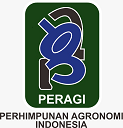Substrate Optimization for Bioemulsification Using Saccharomyces cerevisiae 2031 by Response Surface Methodology
Abstract
Biosurfactants are microbially derived amphiphilic molecules that can be used as biodegradable emulsifiers in various applications. For biosurfactant production to be economically viable, inexpensive raw materials should be used. In this study, substrate optimization of biosurfactant production from Saccharomyces cerevisiae 2031 was done using molasses as an additional carbon source to glucose, and coco paring meal extract as a nitrogen source. Optimum conditions were determined as pH 5.69, 10.60% (w.v-1) molasses and 7.27% (v.v-1) coco paring meal extract using Box-Behnken design. At these conditions, the obtained responses: namely biomass concentration and % emulsification index determined with kerosene, were 6.43 g.L-1 and 82.81%, respectively. The highest emulsification activity (84.60%) was attained after 4 days of shake-flask fermentation. On the other hand, a bioreactor system observed the maximum yield for emulsification activity (93.33) after 4 days. The biosurfactant extracted was characterized by its total sugar, protein content and surface tension reduction.
Keywords
Full Text:
PDFReferences
Akubude, V.C., Sule, S., Chinweuba, D.C. & Okafor, V.C. (2021). Chapter 5 – Application of biosurfactant in food industry. In: Microbially-Derived Biosurfactants for Improving Sustainability in Industry. Green Sustainable Process for Chemical and Environmental Engineering and Science. pp. 109- 125. https://doi.org/10.1016/B978-0-12-823380-1.00004-6
Alcantara, V.A., Pajares, I.G., Simbahan, J.F. & Rubio, M.L.D. (2012). Substrate dependent production and isolation of an extracellular biosurfactant from Saccharomyces cerevisiae 2031. Philippine Journal of Science, 141: 13-24.
Almaral P.F.F., Coelho, M.A.Z., Marrucho, I.M.J. & Coutinho, J.A.P. (2010). Biosurfactants from yeasts: characteristics, production and application. Advances in Experimental Medicine and Biology, 672:236-49. Doi: 10.1007/978-1-4419-5979-9_18.
Bodour, A.A. & Miller-Maier, R.M. (1998). Application of a modified drop-collapse technique for surfactant quantitation and screening of biosurfactant-producing microorganisms. Journal of Microbiology, 32: 273-280.
Cameron, D.R., Cooper, D.G. & Neufeld, R.J. (1998). The mannoprotein of Saccharomyces cerevisiae is an effective emulsifier. Applied and Environmental Microbiology, 54: 1420-1425.
Chaprao, M.J., Ferreira, I.N.S., Correa, P.F., Rufino, R.D., Luna, J.M., Silva, E.J. & Sarubbo, L.A. (2015). Application of bacterial and yeast biosurfactants for enhanced removal and biodegradation of motor oil from contaminated sand. Electronic Journal of Biotechnology. 18(6):471-479. http://dx.doi.org/10.1016/j.ejbt.2015.09.005
Cooper, D.G. & Goldenberg, B.G. (1987). Surface-Active Agents from Two Bacillus Species. Appl Environ Microbiol 53: 224-229.
Cooper, D.G. & Paddock, D.A. (1984). Production of a Biosurfactant from Torulopsis bombicola. Applied and Environmental Microbiology, 47(1):173–176.
Edding, S.N. (2009). A multi-step recovery strategy for the isolation of a biosurfactant from Saccharomyces cerevisiae 2031. [BS thesis]. Ermita District, Manila: University of the Philippines, Manila. (Available at the University of the Philippines Manila Library)
Freitas, B.G., Brito, J.G.M., Brasileiro, P.P.F., Rufino, R.D., Luna, J.M., Santos, V.A. & Sarubbo, L.A.(2016). Formulation of a commercial biosurfactant for application as a dispersant of petroleum and by-products spilled in Oceans. Frontiers in Microbiology, 7. https://doi.org/10.3389/fmicb.2016.01646
Held, P. (2010). Monitoring the growth of beer brewing strains of Saccharomyces cerevisiae- The utility of synergy H1 for providing high-quality kinetic data for yeast growth applications. http://www.biotek.com
Jimoh, A.A. & Lin, J. (2019). Biosurfactant: A new frontier for greener technology and environmental sustainability. Ecotoxicology and Environmental Safety 184: 109607. https://doi.org/10.1016/j.ecoenv.2019.109607
Kumar, A., Singh, S.K. & Kant, C. (2021) Microbial biosurfactant: a new frontier for sustainable agriculture and pharmaceutical industries. Antioxidants, 10(9):1472. https://doi.org/10.3390/antiox10091472
Maneerat, S. (2005). Production of biosurfactants using substrates from renewable resources. Songklanakarin J Sci Technol 27: 675-683. http://www.asksilicone.com/pdfs/Biosurfactants.pdf
Patel, R.M. & Desai, A.J. (1997). Biosurfactant production by Pseudomonas aeruginosa GS3 from molasses. Letters in Applied Microbiology, 25: 91-94.
Perez-Guevara, F., Riba, J.P. & Strehaiano, P. (1994). Effect of yeast extract/sugar ratio on growth of Schizosaccharomyces pombe. Bioresource Technology, 48(1):13-15. https://doi.org/10.1016/0960- 8524(94)90128-7
Ribeiro, B.G., Campos Guerra, J.M. & Sarubbo, L.A. (2022). Production of biosurfactant from S. cerevisiae and its application in salad dressing. Biocatalysis and Agricultural Biotechnology, 42: https://doi.org/10.1016/j.bcab.2022.102358
Ribeiro, B.G., Dos Santos, M., Da Silva, A.I., Meira, M.H., Campos Guerra, J.M. & Sarubbo, A.L. (2020). Study of the biosurfactant production by Saccharomyces cerevisiae URM 6670 using agro- industrial waste. Chemical Engineering Transactions, 79:61-66. https://doi.org/10.3303/CET2079011
Rocha e Silva, F.C.P., Roque, B.A.C., Rocha e Silva, N.M.P., Rufino, R.D., Luna, J.M., Santos, V.A., Banat, I.M. & Sarubbo, L.A. (2017). Yeasts and bacterial biosurfactants as demulsifiers for petroleum derivatives in seawater emulsions. AMB Express. 202. DOI 10.1186/s13568-017-0499-6
Rodrigues, L.R., Teixeira, J.A. & Oliveira, R. (2006). Low-cost fermentative medium for biosurfactant production by probiotic bacteria. Biochemical Engineering Journal, 32: 135-142. https://doi.org/10.1016/j.bej.2006.09.012
Rufino, R.D., De Luna, J.M., De Campos Takaki, G.M. & Sarubbo, L.A. (2014). Characterization and properties of the biosurfactant produced by Candida lipolytica UCP 0988. Electronic Journal of Biotechnology, 17(1):34-38. https://doi.org/10.1016/j.ejbt.2013.12.006
Sajna, K.V., Sukumaran, R.K., & Gottumukkala, L.D. (2015) Crude oil biodegradation aided by biosurfactants from Pseudozyma sp. NII 08165 or its culture broth. Bioresource Technology, 191:133– 139.
Sharma, N., Lavania, M. & Lal, B. (2022) Biosurfactant: A next-generation tool for sustainable remediation of organic pollutants. Frontiers in Microbiology.12. https://doi.org/10.3389/fmicb.2021.821531
STAT- EASE INC. (2004). FAQ – Interpreting lack of fit. http://www.statease.com
Stein, H.H., Casas, G.A., Abella, J.J., Liu Y. Liu & Sulabo, R.C. (2015). Nutritional value of high fiber co-products from the copra, palm kernel, and rice industries in diets fed to pigs. Journal of Animal Science and Biotechnology. (2015) 6:56. DOI 10.1186/s40104-015-0056-6
Yabes, M.P. (2002). Isolation, screening, and characterization of yeasts for biosurfactant production using waste cooking oil as substrate. [MS thesis]. Los Baños, Laguna: University of the Philippines, Los Baños. (Available at the University of the Philippines Los Baños Library)
Refbacks
- There are currently no refbacks.


























